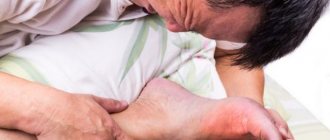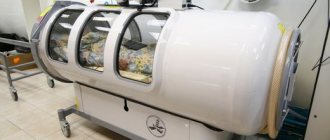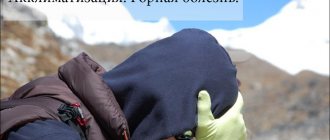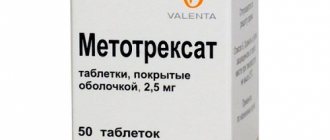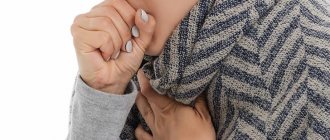Treatment of gout with medications plays a key role in the fight against this disease. And all other methods of treatment are only auxiliary means. In this context, physiotherapy, spa treatment and traditional medicine are not able to cure gout without the use of medications. Even diet therapy is not able to completely cope with the disease without drug therapy. In choosing a treatment strategy, the leading role is given to the rheumatologist, who must select medications taking into account the form and stage of the disease, as well as possible complications and contraindications. And before we begin the review of medications, let us dwell on the pathogenesis and clinical picture of gout.
Pathogenesis and clinic of gouty arthritis
Purines are the same protein that is the building material of our body. They enter our body with food and are also produced by our cells. Purine metabolism is a series of complex metabolic reactions, the end product of which is uric acid. In our body there is a clear balance between the production and excretion of uric acid. When the human body is healthy, then all reactions in it occur harmoniously and orderly. With metabolic disorders, as well as with pathologies of the renal system, an imbalance occurs between the synthesis and excretion of uric acid, as well as its derivatives. This imbalance leads to the accumulation of uric acid in the blood plasma and the deposition of its salts in tissues and joints in the form of small crystals.
When the level of uric acid in the blood plasma increases, uricemia develops. However, it is not synonymous with gout. A person may have uricemia, but this fact does not mean that he has gout. Uricemia can accompany other ailments and also develop as a result of consumption of fatty meat foods and excessive physical activity. In addition, gout often develops against the background of genetically determined metabolic disorders, as a result of the presence of a defective protein in the body. People who have this gene in their DNA become more vulnerable and are at risk of developing gout.
In the chronic course of the disease, specific processes develop in the joints, provoking the development of gouty arthritis. And several years after the development of the disease, tophi (gouty nodes) are formed, damage to internal organs in the form of nephropathies and chronic renal failure.
Who is at risk of getting gout?
As already mentioned, the main causes of this disease are considered to be an excessive amount of uric acid (urate salts) in the body, as well as its incomplete elimination from the body due to impaired renal function.
People at risk for gout include people who:
- suffer from any kidney disease;
- have problems with excess weight;
- suffer from arterial hypertension;
- patients with diabetes mellitus;
- having problems with the gastrointestinal tract;
- abuse protein foods (meat, fish, mushrooms, legumes);
- are undergoing or have recently undergone chemical or radiation antitumor therapy;
- abuse alcoholic and low-alcohol drinks (more often this affects the so-called “beer alcoholics”).
Also at risk are those people whose blood relatives have suffered or are currently susceptible to this disease.
General principles of drug treatment
Comprehensive treatment of gout includes the following drug treatment:
- hypouremic drugs (normalizing uric acid metabolism);
- uricosuric drugs (promoting the excretion of uric acid in the urine);
- non-steroidal anti-inflammatory drugs NSAIDs (relieving inflammation);
- colchicine (relieves gout symptoms);
- steroidal anti-inflammatory drugs;
- analgesics (relieving pain);
- chondroprotectors (intended for the treatment of joint pathologies).
Since gout often leads to deformation and deformation of the joint, as well as thinning of its cartilage, the medications from the list above can prevent and prevent the most serious consequences.
Notes[edit | edit code]
- ↑ 1234
Monarch Disease Ontology release 2018-06-29sonu - 2018-06-29 - 2018. - ↑ 1234
Disease Ontology release 2019-05-13 — 2019-05-13 — 2020. - ↑ Gout / V. G. Barskova // Peru - Semi-trailer. - M.: Great Russian Encyclopedia, 2014. - P. 524. - (Big Russian Encyclopedia: [in 35 volumes] / chief editor Yu. S. Osipov; 2004-2017, vol. 26). — ISBN 978-5-85270-363-7.
- ↑ 1 2 3 4 Richette P., Bardin T.
Gout // Lancet. — January 2010. — Vol. 375, No. 9711. - P. 318-328. - doi:10.1016/S0140-6736(09)60883-7. - PMID 19692116. - ↑ 1 2 Pillinger MH, Rosenthal P., Abeles AM
Hyperuricemia and gout: new insights into pathogenesis and treatment // Bulletin of the NYU Hospital for Joint Diseases. - 2007. - Vol. 65, No. 3. - P. 215–221. - PMID 17922673. Archived December 16, 2008. - ↑ The Internet Classics Archive Aphorisms by Hippocrates. MIT
_ - ↑ A. Cornelius Celsus.
On Medicine.
University of Chicago
. - ↑ Zilva J.F., Pannell P.R.
Clinical chemistry in diagnosis and treatment. - M.: Medicine, 1988. - 528 p. — ISBN 5-225-00220-X. - ↑ Nasonova V., Barskova V.
Disease of abundance // Science and life. - 2004. - No. 7. - ↑ Garrod AB
The nature and treatment of gout and rheumatic gout. - London: Walton and Maberly, 1859. - ↑ Keitel W.
The High Priest of gout – Sir Alfred Baring Garrod (1819–1907) // Z Rheumatol. - 2009. - Vol. 68, No. 10. - P. 851-856. - doi:10.1007/s00393-009-0541-4. - PMID 19937040. - ↑ Storey GD
Alfred Baring Garrod (1819–1907) // Rheumatology (Oxford). - 2001. - Vol. 40, No. 10. - P. 1189-1190. - doi:10.1093/rheumatology/40.10.1189. - PMID 11600751. - ↑ McCarthy DJ, Hollander JL
Identification of urate crystals in gouty synovial fluid. // Annals of Internal Medicine. - 1961. - Vol. 54. - P. 452. - ↑ The Disease Of Kings - Forbes.com. Forbes
. - ↑ Zaselsky V., Lalayants I.
The nature of genius // Ogonyok. - 1996. - No. 27. - P. 4. - ↑ 1 2 Lalayants I.
Uric acid hits the head. The bumps of genius should be looked for not on the head, but on the legs // Around the World. — 2008. - ↑ 1 2 3 4 5 Ed.
S.L. Nasonova. Clinical recommendations. Rheumatology. - GEOTAR-Media, 2008. - pp. 112-119. — 288 p. — ISBN 978-5-9704-0698-4. - ↑ Lisa K. Stamp, Tony R. Merriman, Nicola Dalbeth.
Gout (English) // The Lancet. — 2016-10-22. - T. 388, issue. 10055. - pp. 2039–2052. — ISSN 1474-547X 0140-6736, 1474-547X. - doi:10.1016/S0140-6736(16)00346-9. - ↑ Barskova, V.G. & Nasonova, V.A. (2002), Gout and the Insulin Resistance Syndrome
, Archived February 1, 2009 on the Wayback Machine
Hypouremic drugs
Medicines from this group correct metabolic processes. The effect on purine metabolism, the end product of which is uric acid, helps to inhibit its production, prevents its entry into the body and improves its excretion in the urine. Drugs from this group disrupt the sequence of certain biochemical reactions, as a result of which the synthesis of uric acid is blocked and the evolution of gout is suspended.
This group includes the following hypouricemic drugs:
- Allopurinol (Alloprim, Allohexal);
- Probenecid (benemid);
- Etebenecid;
- Sulfinpyrazone (Anturan);
- Benzodarone;
- Benzbromarone
List of desirable products
Recommended vegetables: carrots, beets, cucumbers. Some crops growing in garden beds have undesirable properties. Such vegetables include radish, celery, spinach, sorrel, horseradish - due to their pungency and acidity. Cauliflower is a vegetable that should not be eaten if you have gout on your legs.
Fruits are the second item on the list of a proper diet for gout. Allowed for consumption are dairy products (low-fat or low-fat), chicken and quail eggs, dried fruits, bee honey, a small amount of butter and vegetable oil every day.
Rating of the five most useful foods in a diet aimed at curing gout:
The most useful foods for gout
- Tomatoes are a storehouse of valuable microelements, previously considered a dubious product.
- Pumpkin - optimizes metabolic processes, prevents the formation of kidney stones.
- Cucumber - a large dose of potassium; water accelerates the elimination of harmful salts.
- Zucchini is helpful in removing uric acid crystals.
- Potatoes - high potassium, low sodium. It has a diuretic effect, which, together with cucumbers and pumpkin, will help a patient with gout.
Uricosuric drugs
Drugs included in this group improve the excretion of uric acid in the urine. It should be said that classical diuretics in this case are not only ineffective, but also strictly contraindicated. Since the mechanism of action of these drugs occurs as a result of obstruction of the secondary absorption of sodium urates by the renal tubules.
Drugs in this group include:
- Atofan;
- Benemid;
- Butadion;
- Flexin;
- Ketazone;
- Ugly.
However, it should be remembered that the accumulation of urates can provoke not only gout, but also other diseases. Among them are diabetes mellitus, thyroid diseases, coronary heart disease, and some viral and bacterial infections.
The use of uricosuric drugs does not contribute to the rapid relief of a gout attack. These drugs have a narrow spectrum of action and are effective only in combination with other drugs in the complex treatment of gout.
Nonsteroidal anti-inflammatory drugs (NSAIDs)
Drugs in this group have a direct anti-inflammatory effect, and sometimes produce a double effect. For example, Butadione is a drug that relieves the symptoms of gout and at the same time has a uricosuric effect. It should be noted that not all anti-inflammatory drugs can be used for gout. Derivatives of acetylsalicylic acid are contraindicated; they have the completely opposite effect: they prevent the removal of sodium urate from the body.
For the treatment of gout, it is recommended to use NSAIDs in different dosage forms. You can simultaneously use the tablet form of Indomethacin, Naproxen, Ibuprofen and an ointment based on these drugs.
Regardless of the form in which NSAID drugs are taken, they effectively suppress the inflammatory process in the joint and quickly relieve the symptoms of gouty arthritis.
However, anti-inflammatory drugs have a number of contraindications from the gastrointestinal tract. The fact is that they slow down the synthesis of substances that suppress the action of gastric juice. As a result, inflammation of the stomach walls occurs, which leads to gastritis and stomach ulcers.
Drugs in this group include:
- Indomethacin;
- Ibuprofen;
- Butadion;
- Naproxen;
- Meloxicam;
- Nimesil.
Colchicine
Despite the fact that colchicine belongs to the group of antitumor drugs, it has a persistent anti-inflammatory and anti-gout effect. For gout, colchicine is a universal treatment drug that is used at any stage of the disease, but under the strict supervision of a doctor. The drug relieves both pain and other symptoms of gout. In addition, the drug inhibits the formation of sodium urates and promotes the removal of uric acid from the blood.
This drug is of plant origin; it is an extract from a beautiful, but very poisonous plant - crocus. However, the pharmacological drug Colchicine is absolutely safe, but is also not without side effects. It causes side effects such as nausea, vomiting, diarrhea, and stomach cramps. Contraindicated in case of allergies, renal failure, alcoholism, pregnancy. Elderly people should take it with caution.
The drug is prescribed immediately after the onset of an acute attack of gout, and it must be taken every hour (no more than 10 tablets per day). Stop taking the medication after the intensity of the pain decreases and other symptoms of the disease disappear.
Steroidal anti-inflammatory drugs
Other anti-inflammatory drugs that are prescribed for gout belong to the group of steroid hormones. They have a very good effect, but, unfortunately, a large number of adverse reactions. Therefore, these drugs are used only in extreme cases, when non-steroidal anti-inflammatory drugs have not had the desired effect, as well as in the case of accumulation of intra-articular fluid. Steroids are administered by injection into the joint cavity.
This group includes:
- Betamethasone acts as an anesthetic, which, moreover, reduces the intensity of the inflammatory process;
- Methylprednisolone is used in different forms: ointments, injections, tablets, and has an anti-inflammatory effect;
- Ketazone effectively eliminates inflammation and is available in the form of tablets and ointments.
Analgesics
Drugs in this group have an analgesic effect and quickly relieve gout pain. Since an acute attack of gout causes severe pain in the affected area, it is first necessary to relieve the pain to alleviate the patient’s condition. In some cases, doctors prescribe psychotropic drugs to relieve severe pain and calm the patient. However, the choice of such drugs must be approached carefully, so in most cases doctors simply prescribe painkillers.
This group includes:
- Diclofenac. The drug acts very quickly. You can also use an ointment based on this product.
- Movalis. The drug has a rapid effect. Produced in ampoules for intramuscular use. It is administered intramuscularly; injecting the drug into a vein is strictly prohibited.
- Voltaren. The drug is available in the form of tablets and ointments.
- Blemaren. Quickly removes uric acid and also promotes its alkalization.
Chondroprotectors
This group includes drugs used for the treatment and prevention of joint diseases. Chondroprotectors are universal drugs that prevent joint destruction and also slow down the processes of destruction that have already begun. They improve blood microcirculation in the affected joint, activate the processes of formation of the main components of cartilage, and stimulate the production of intra-articular fluid. Take these drugs only as prescribed by a doctor.
This group includes:
- Alflutop;
- Structum;
- Artra;
- Teraflex;
- Glucosamine.
Since gout develops primarily in the lower extremities, many patients are interested in the question of how to treat gout on the legs with medication. Drug treatment of gout of the legs is carried out with analgesics, primarily in order to relieve pain, and then anti-gout therapy is carried out in combination with drugs of other effects.
How dangerous is the development of the disease?
If you do not analyze your usual diet in time, there is a risk of gouty arthritis, which affects many joints. The disease occurs gradually - acid crystals accumulate in the joints. With a large number of accumulations, joint deformation is possible. Having filled the joints, the crystals move to soft tissues - muscles, tendons. An increase in mechanical load on the latter makes them weak and capable of tearing.
An increase in the number of tophi leads to the emergence of foci of urea accumulation everywhere. Those suffering from gout will gradually develop coronary heart disease, osteoporosis, metabolic syndrome, and arterial hypertension.
A negative consequence is urolithiasis. The disease is complicated by the fact that salt crystals settle in the kidneys, making it difficult to function.
Many people hear about kidney failure. Consequences: pyelonephritis, hydronephrosis, arterial hypertension. The cause of insufficiency is kidney stones, which are fatal.
Nutritionists, nutritionists, and adherents of a healthy lifestyle say that gout can be cured. It is necessary to review the diet, decide which foods to exclude and which to use regularly.
Treatment of gout complications
A late complication of gout is tophi (accumulation of urate salts). They form 5-6 years after the first attack of gouty arthritis occurs. As a rule, tophi are painless. Only in some cases, when tophi grow into the underlying tissue, they can cause painful symptoms and complicate the course of gout. Sometimes tophi open on their own, releasing urate crystals. Opened tophi must be treated with an antiseptic, for example, Dimexide, iodine, antibiotic ointments. With adequate and timely anti-gout treatment, tophi decrease on their own.
Important! Antibiotics are not used for gout. Gouty arthritis is not an infectious disease, therefore, antibiotics cannot be effective in cases of non-infectious origin of the disease.
For gout, antibiotics are used only if a bacterial infection is associated with the tophi. Very often, a fistula can form in the cavity of the tophi, which, when breaking through, can become infected. In this case, antibiotics are not only appropriate, they are necessary.
Another serious complication of gouty arthritis is chronic renal failure. This is a very serious and extremely unwanted complication of gout. To avoid such a scenario, it is necessary to do periodic infusions (for intravenous infusion) of alkalizing solutions. Alkalinization prevents the deposition of uric acid salts in tissues and joints.
History[edit | edit code]
"Gout". Illustration by James Gillray, 1799. The master cartoonist depicted gout pain as a demon or dragon.
Gout has been known since ancient times. The first documentary evidence of the disease is known from Ancient Egypt and dates back to 2600 BC. e.[4] They are based on the description of gouty arthritis of the thumb[4]. Ancient Greek healer and physician Hippocrates in the 5th century BC. e. described the clinical symptoms of gouty arthritis in his “Aphorisms,” where he noted that the disease does not occur in eunuchs and women before menopause [5] [6]. The Roman philosopher and physician Aulus Cornelius Celsus described the relationship between the development of gout and alcohol consumption and associated kidney problems[7]. In 150, Galen pointed out that gout was caused by “licentiousness, intemperance and heredity”[8].
At the end of the 17th century, the English clinician Thomas Sydenham, who suffered from gout for more than 30 years, classified it as a separate disease and very accurately described the clinical picture of an acute attack of gouty arthritis in his work “Treatise on Gout” (lat. “Tractatus de podagra et hydrope”). . In it, he compared the pain syndrome of gout with pain “from squeezing a limb with a press” and described the patient’s sensations comparable to how “a huge dog dug its fangs into a finger”[9]. In 1679, the Dutch scientist Antonie van Leeuwenhoek first described the microscopic structure of uric acid crystals[5].
In 1848, the English physiologist Alfred Baring Garrod (Alfred Baring Garrod, 1819-1906), using a thread dipped into the blood of a patient suffering from gout, discovered and described the fact of increased uric acid in the blood during this disease [10][11][12 ].
The first scientific works of the French physician Jean Martin Charcot relate to the field of gout: “Damage to cartilage in gout” (French Les altérations des cartilages dans la gouite, 1858), “Gouty deposits (tophi) in the outer ear of gouty people” (Les concrétions tophacées de l'oreille externe chez les goutteux, 1860), “Changes in the kidneys with gout” (Les altérations du rein chez les goutteux, 1864), “On gout and lead poisoning” (Les rapports de la goutte et de l'intoxication saturnine, 1864).
In 1899, the presence of urate crystals in the joint fluid was discovered during an attack of gouty arthritis. In 1961, MacCarty and Hollander identified the role of urate crystals in the occurrence and development of gouty inflammation[13].
Historically, from the Middle Ages until the 20th century, gout primarily affected rich and noble people, which is why it was called “the disease of kings”[4][14], “the disease of the rich” and “the disease of aristocrats”[4] . It was thought to be associated with excess weight, overeating (especially meat consumption) and excessive consumption of alcoholic beverages. For example, in 1739, the Frenchman Eugene Moucheron published a brochure entitled “On noble gout and its accompanying virtues,” in which he praised gout and noted that it is a disease of kings, princes, outstanding commanders, intelligent and gifted people , and also gave examples of crowned heads, political figures, and artists who suffered from gout[15]. A new outbreak of interest in gout arose at the beginning of the 20th century, when Havelock Ellis (Eng. Henry Havelock Ellis, 1859-1939) published a book in 1927 entitled “The History of the English Genius.” In it, the author touched on the topic of gout and cited the example of 55 famous outstanding Englishmen who suffered from it[16]. In 1955, Egon Orowan's work “ The origin of man”
", published in the journal Nature, in which he described the increased incidence of gout among geniuses and explained it by the fact that uric acid is structurally very similar to methylated purines: caffeine, theophylline and theobromine, which are stimulants of mental activity that have a stimulating effect on higher brain functions, in particular, concentration and the ability to concentrate. Orovan pointed out that uric acid in all developed mammals, with the exception of apes and humans, is broken down by the enzyme uricase produced in the liver to allantoin, while in primates, due to the absence of uricase, it remains in the blood [16]
Modern methods of treating gout
Gouty arthritis is an insidious disease that, even at present, cannot be completely cured. Therefore, modern researchers are looking for effective drugs that would more reliably and safely remove uric acid from the body, and also eliminate the disease forever. There are no such drugs yet, but there are more advanced drugs that relieve the symptoms of gouty arthritis for a long time. Some drugs have already been released, while others are only in the development stage. Of the modern drugs of the new generation, the following are known:
- Arcoxia. This medicine is very effective, but it is not indicated for everyone, as it can cause a large number of adverse reactions. However, with proper use of the drug, adverse reactions are rare and occur infrequently.
- Febuxostat. This medicine is intended to normalize the concentration of uric acid in the blood. However, this drug should not be taken during an exacerbation of the disease. Because at first it increases the level of uric acid, and only over time lowers it. Febuxostat has been taken for a long time. If an exacerbation occurs while taking the drug, then you should not stop taking it. The medicine is taken only as prescribed by a doctor.
- Losartan - reduces the concentration of uric acid in the blood plasma.
- Urate oxidase - the drug reduces the concentration of uric acid. The drug is currently being tested in the United States.
Features of the manifestation of gout
Gout is a disease of the joints that occurs as a result of the deposition of urates - uric acid salts - in them. This disease can affect the joints of the knees, elbows, hands, fingers and toes. Most often, gouty arthritis affects the joints of the big toes. Usually diagnosed in the male half of the population after 40 years. In women, joint disease occurs after menopause. In old age, it can be triggered by kidney disease and frequent use of certain medications.
Among the reasons that cause changes in the functioning of joints, the following are usually distinguished:
- Constant excessive physical activity.
- Tight, uncomfortable shoes.
- Poor nutrition, including addiction to alcohol.
- Overweight.
- Failure in the metabolic process.
- Diuretic drugs.
- Genetic conditioning.
Gout develops gradually. For a long time, a person may not even know that serious disorders are occurring in his joints. In the development of the disease, there are stages of exacerbation and remission, when the symptoms are pronounced or, conversely, the symptoms do not bother the patient.
During an exacerbation, the patient's temperature rises, swelling and redness appear, and hypersensitivity of the affected joint appears. Severe pain does not go away for a long time, usually intensifying at night, disrupting sleep.
In the video, general practitioner Elena Vasilyevna Malysheva and neurologist Dmitry Nikolaevich Shubin deal with the symptoms of the disease:
Treatment of gout during exacerbation involves eliminating pain and relieving inflammation. It is usually performed on an inpatient basis and involves a complex administration of medications. It is important to consult a doctor in time, who will prescribe a suitable course of treatment, taking into account the degree of damage and the amount of uric acid in the body, the general condition of the patient and his individual intolerance to drugs.
Read also: Dolobene for sprains
A few more words about gout
In an acute attack of gout, relief occurs within 24 hours if treatment is started promptly. First of all, the patient is prescribed the maximum daily dose of certain medications, which are used as short-term treatment to relieve the symptoms of an acute attack. Doses are reduced after symptoms disappear. The most effective drugs are drugs from the NSAID group. It should be remembered that aspirin, which is a non-steroidal anti-inflammatory drug, is contraindicated for gout. Since drugs that reduce the concentration of uric acid in the body have some side effects, the principles of treatment for gout can only be determined by the attending physician.
It sometimes happens that some patients experience painful gout symptoms for a long time because they do not take the medications prescribed to them. Although chronic gout sufferers need to take such medications for life to maintain optimal uric acid levels. After all, with their help they can feel absolutely healthy. But if you stop taking the medication, you will experience an acute attack of gout at some point in the future. Without appropriate medications, gout attacks will develop more and more often and become more intense.
Important! Each drug has contraindications and side effects. Therefore, it is strictly forbidden to self-medicate and prescribe medications yourself. The regimen and tactics of treatment with medications are prescribed only by a rheumatologist. Thus, at the first symptoms of the disease, you should immediately consult a doctor for quality medical care. Remember, your health is in your hands.
Medicines for basic treatment of gout
After an acute attack of gout has been stopped, it is necessary to switch to basic treatment, which involves reducing the level of uric acid in the blood, as well as removing salts from the body. The drugs in this case are non-steroidal and practically do not serve to relieve pain or other symptoms of the disease. There are two groups of these drugs:
Uricodepressants (suppress uric acid synthesis)
Allopurinol. It should be taken once a day at a dosage of 300 mg or 3 times a day. 100 mg each. It is advisable to take the tablet after meals. Allopurinol ensures the removal of uric acid from the blood plasma. This remedy prevents complications of the disease. While taking Allopurinol, the patient is required to monitor the level of uric acid in the blood monthly. The use of the medicine must be agreed with the doctor. The fact is that Allopurinol can aggravate the condition of the body in the presence of concomitant diseases. An analogue of the presented drug is Thiopurinol.
Uricosuric medications (remove salts from joints and cleanse the blood)
- Benemid. These tablets can speed up the removal of salts from the body several times. The presented medicine is quite well tolerated by patients.
- Anturan. These tablets are more effective than the previous remedy. However, the drug cannot be taken together with Aspirin, which blocks the action of Anturan.
- Amplivix. Treatment with this remedy helps speed up the removal of uric acid salts from the body. However, you will have to take it from several weeks to a couple of months.
- Flexen. The medicine presented is sold in capsules, tablets, ampoules and suppositories. This medicine is used if it is necessary to relieve an acute attack and other symptoms of gout.
Read also: Which doctor treats glenohumeral periarthritis
All non-steroidal drugs presented are prescribed by the doctor depending on the nature of the attack. It is necessary to take into account the patient’s age, the ability of the liver and kidneys to perform their functions well.
The most used medicine for lotions is Dimexide. It is used as an additional remedy for the treatment of gout. You need to use it correctly:
- the product must be mixed with water in equal quantities;
- Next, a piece of gauze is soaked in the mixture, applied to the affected joint and covered with film;
- Additionally, the compress must be wrapped in cotton cloth and a woolen scarf;
- it must be removed after half an hour.
The course of treatment can last 10-90 days. Reviews about this medicine are quite good. However, compresses with Dimexide should not be used during an acute attack.

